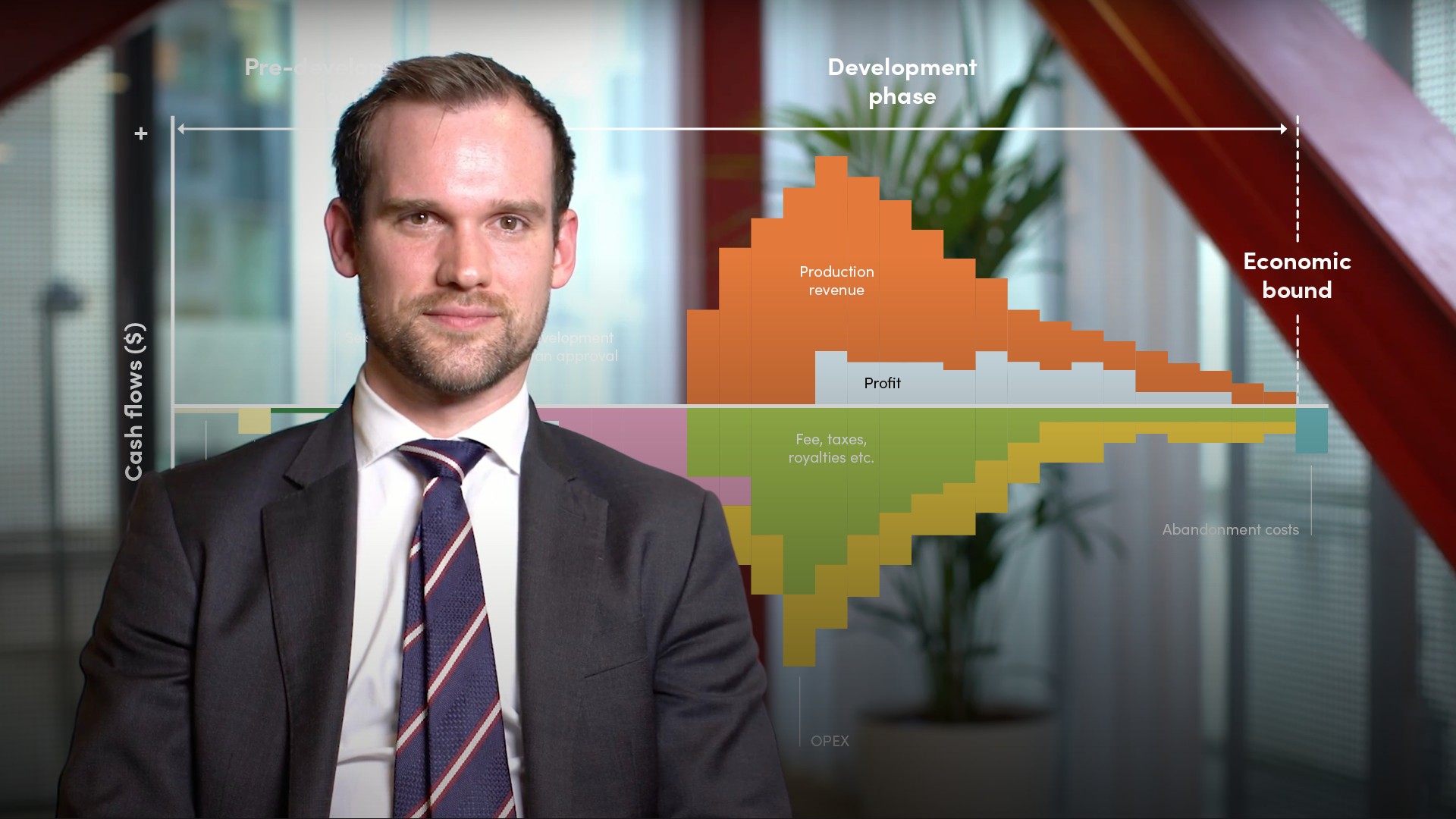
Introduction to Oil and Gas Financing

Dan Paterson
Oil & gas consulting
The oil and gas industry is divided into different subsets within the industry. Operational components are divided into three main areas: Upstream, Midstream and Downstream. In this video, Dan provides an overview of each area and discusses their relative attraction for investment.
The oil and gas industry is divided into different subsets within the industry. Operational components are divided into three main areas: Upstream, Midstream and Downstream. In this video, Dan provides an overview of each area and discusses their relative attraction for investment.
Subscribe to watch
Access this and all of the content on our platform by signing up for a 7-day free trial.

Introduction to Oil and Gas Financing
4 mins 42 secs
Key learning objectives:
Explain the three operational components of the oil and gas industry
Discuss the different types of financing options available in the industry
Identify the numerous risk assessment factors when considering different financing options.
Overview:
The Oil and Gas Industry aims to meet global energy demands. It is characterised in to; the upstream, involving finding the resource and its commercialisation, midstream, which revolves around transportation and the downstream for a further refinery. These projects are largely capital-intensive and hence require financing options, e.g. corporate loans to ensure profitability to all parties involved.
Subscribe to watch
Access this and all of the content on our platform by signing up for a 7-day free trial.
What is an Upstream Operation?
Upstream operations consist of finding and developing fields to produce hydrocarbons (oil and or gas). The upstream sector is often referred to as the E&P business.
Hydrocarbons are found by drilling into wells and installing infrastructure in the vicinity. From this, fluids are received from the subsurface and are separated into crude oil or natural gas.
The E&P sector is hugely uncertain and requires management of risk. If the project is delivered on time and budget, the rewards for discovery can be material. As it’s involved with great risk, they typically seek to achieve returns greater than 15% before sanctioning.
What is the Midstream Operation, and how are resources transported?
This primarily consists of the transportation of oil or gas from the upstream facility to end consumers or for further processing in the downstream sector.
- Oil transportation is typically by pipeline or ship. They are moved from remote locations to industrial centres
- Natural gas transportation is typically transported by pipeline when in a gaseous state. The exception is Liquified Natural Gas (LCN) – this enables gas to be transported by ship due to its ‘supercooled’ property
The Midstream infrastructure requires large capital investment. If operational, it represents an attractive investment to infrastructure or pension funds, delivering 6-10% returns.
What does the Downstream Sector consist of?
It comprises of further processing at an oil refinery or petrochemical plant to convert crude oil into products such as:
- Petrol
- Base plastics
These products are then marketed to end consumers. Downstream operations, particularly in oil refining, operate on very small margins compared to the upstream and midstream business.
In what ways can commodity prices have a positive impact on refining margins?
Low crude oil prices will have a positive effect on refining margins as there is often a lag (no effect) from lower crude prices on diesel or gasoline prices.
What are the key financing options?
Equity sources:
- IPOs
- Cash calls
- Shareholder loans
- Equity raises
Third-party financing products:
- Corporate loans
- Acquisition funding
- RBL – Reserve based lending
- EBL – Equity bridge loans
- Project finance
Other sources:
- Operational current or future cash flow
- Fundraising through asset disposals
What does the risk assessment for financing options comprise of?
- The type of project and nature of the transaction
- A project’s location and subsequent political, legal, regulatory, economic, social and environmental considerations
- Creditworthiness and obligations of key stakeholders and participants
- Availability and coverage of insurance
- Individual institutional requirements and risk appetite
Subscribe to watch
Access this and all of the content on our platform by signing up for a 7-day free trial.

Dan Paterson
There are no available Videos from "Dan Paterson"



























